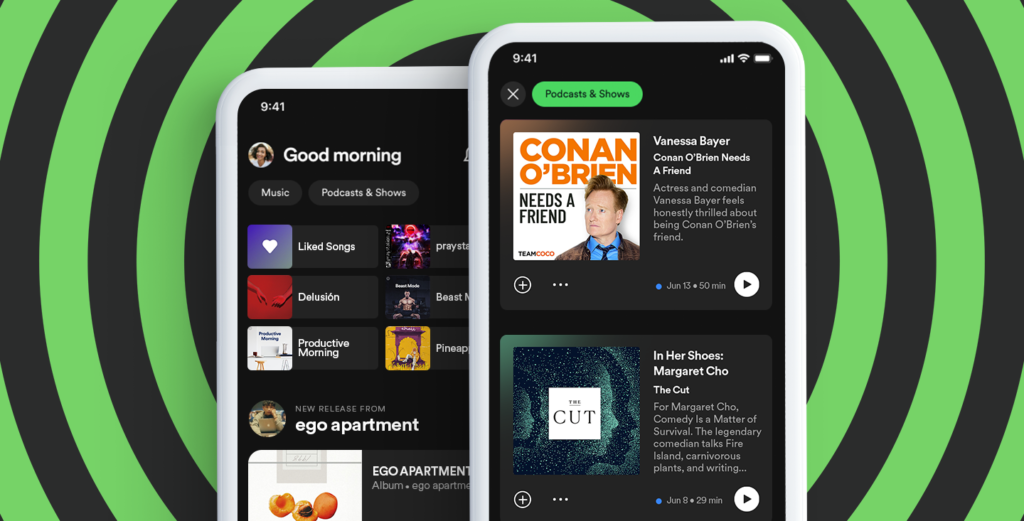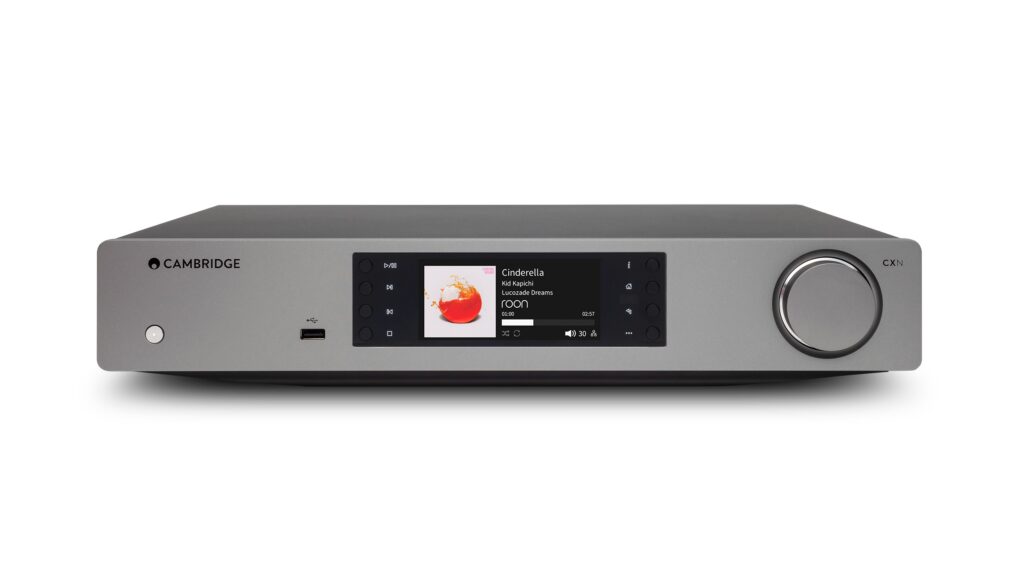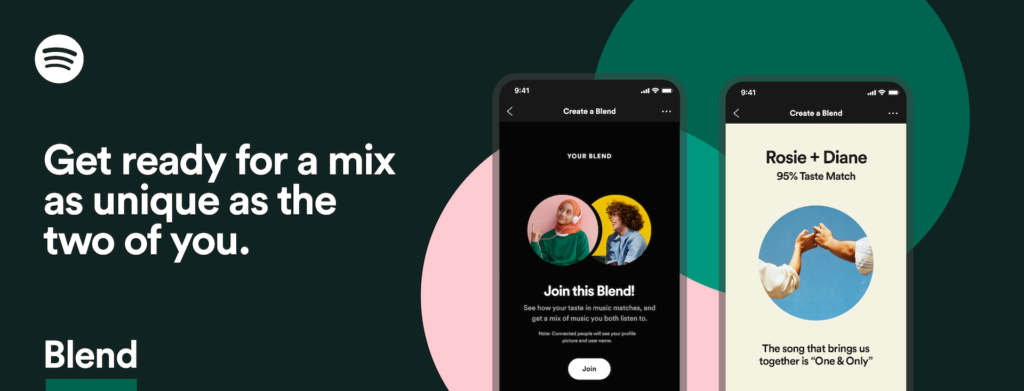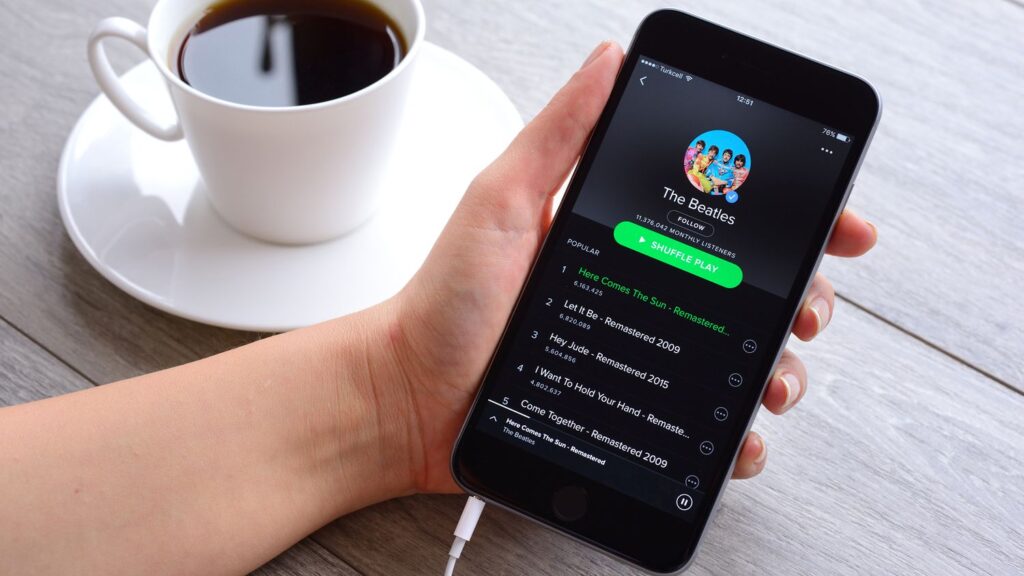Hi-Fi Hall of Fame
Business Inductee
Spotify

Introduction
Spotify is a global streaming service that delivers music, podcasts, and audiobooks over the Internet. Spotify was founded in Sweden in 2006 by Daniel Ek and Martin Lorentzon, who wanted to create a music streaming service that was both legal and affordable. Commercial service was initially launched in Sweden in 2008, and swiftly gained popularity among users. In 2011, Spotify launched in the United States, and it now operates in over 170 countries worldwide.
Spotify has grown into one of the largest music platforms in the world, with over 400 million monthly active users. Users can stream audio using a wide variety of devices, including smartphones, tablets, computers, audio streamers, and smart speakers.

Key Facts
| Name | Spotify |
| Category | Audio Streaming Service |
| Founded | 2006 |
| Service Launch | 2008 (Sweden) |
| Key Technologies | Cloud Internet Vorbis and AAC Codecs Machine Learning Artificial Intelligence User Preference Algorithms |
Technologies
Streaming audio services such as Spotify eliminate the need to own the physical media – records, tapes, CDs – that were traditionally used to store audio. Instead, audio content is stored on servers which are owned and operated by the streaming service provider, and the content is streamed to the user via an Internet connection.
This has changed the way that people think about music – people no longer have to purchase a physical copy of a record, tape, or disc to hear their favourite artist. That also means that a major part of a “Hi-Fi” system – the radio, turntable, CD player, or tape deck – is no longer needed. All that is needed is an Internet connection and a streaming device.

Spotify employs a number of sophisticated technologies to support and scale the service. Beginning with the network itself, Spotify uses a “Cloud Internet” network architecture to stream audio from their servers to individual users. This architecture is very efficient and robust, as it allows Spotify to use just a few large servers to reach millions of users.
At the listener’s end, Spotify has developed applications for all of the popular operating systems (Windows, Mac, iOS, Android, and more) so that users can listen to audio on almost any device they choose.

Spotify, like all streaming services, stores all of their recorded audio in a digital format. When a listener hits “play” to start listening, an audio stream is initiated and “coded” for transmission to the listener’s device, where it is then “decoded” and converted to analog format for playback. Spotify use two popular “codecs” to perform these coding and decoding functions.
The first codec is called “Vorbis”, which is a free, open source codec. The Vorbis bit rate can be adjusted from 96 kilobits per second for moderate audio quality, all the way up to 320 kilobits per second for the highest audio quality. The second codec is called HE-AAC (High Efficiency Advanced Audio Coding), which is used for playback to web-based listeners. HE-AAC is licensed, but the small cost of licensing is offset by the high efficiency and the wide availability of client devices that can use it. Spotify use bit rates from 24 kilobits per second up to 256 kilobits per second, depending on the service.

Spotify employ a number of advanced computing technologies to enhance the user experience. “Machine Learning” and “Artificial Intelligence” technologies are used to learn about users’ preferences and to analyze the popularity of new and old music. Spotify use this data to help listeners build and share playlists, and to suggest new music that they may like.
Spotify have developed their own proprietary User Preference Algorithm technology, which analyzes each individual users’ listening habits and preferences. This allows Spotify to offer social features that allow users to connect with friends and share their music with each other. Users can follow each other, create collaborative playlists, and share their favorite songs on social media using features such as “Blend”.

Performance
Spotify’s performance is remarkable in many ways. First, the service offers a tremendous range of audio content, including music, podcasts, and audible books. If there is a type of music, an artist, a subject of conversation, it is probably available on Spotify.
Second, Spotify uses advanced technologies to help the listener find their favourite music and to discover new music. Those same technologies power a social service, so a listener can share music and playlists with friends and family. This has helped many people discover new music that they might not have otherwise found.
Third, Spotify’s service is affordable. They employ a “freemium” business model. About half of Spotify’s users subscribe to the service for free, which provides access to a limited version of the platform. The other half pay a monthly subscription, which eliminates advertisements and offers offline playback.
Fourth, Spotify’s reach is enormous. They offer services in more than 170 countries, and have more than 400 million subscribers.

Finally, since this is the “Hi-Fi Hall of Fame” we have to talk about the audio quality of the service. Audio performance on Spotify ranges from good to excellent. To experience the best audio quality, a user should opt for the paid service (which provides a higher data bit rate for more “lossless” audio) and they should stream the audio through high quality components. Users who opt for the free service, or listen to the stream on low quality audio equipment, will not hear the best sound quality, but it will certainly be good enough for many people.
Impact
Spotify has had a significant impact on the music industry since its launch. One of the most significant impacts of Spotify has been on the way that people consume music. Before Spotify, many people would buy physical copies of albums or download music illegally. Spotify has made it easier and more affordable to access music legally. This has reduced the sales of physical media, and likely helped to reduce “piracy”.
Spotify has also changed the way that artists are discovered and promoted. In the past, record labels were the gatekeepers of the music industry, and they decided which artists would be signed and promoted. Spotify has disrupted this model by allowing independent artists to upload their music directly to the platform, and by using algorithmic recommendations to promote new artists. This has helped many independent artists gain exposure and build a fan base, without the need for a record label.
Some critics have argued that Spotify’s impact on the music industry has not been entirely positive. One of the main criticisms of Spotify is that it pays very little to artists for their music. Spotify pays artists a fraction of a cent per stream, which means that many artists earn very little from their music on the platform. This has led to concerns about the sustainability of the music industry, and many artists have called for Spotify to pay them more fairly.
If you’d like to try Spotify for yourself, here’s a link to the company website: https://www.spotify.com
Induction to the Hi-Fi Hall of Fame
Spotify has become one of the most popular music platforms in the world, with millions of users accessing its vast library of songs every day. Spotify’s “freemium” business model, sophisticated technology, and social features have helped to build a strong community of music lovers. Spotify is inducted into the Hi-Fi Hall of Fame.